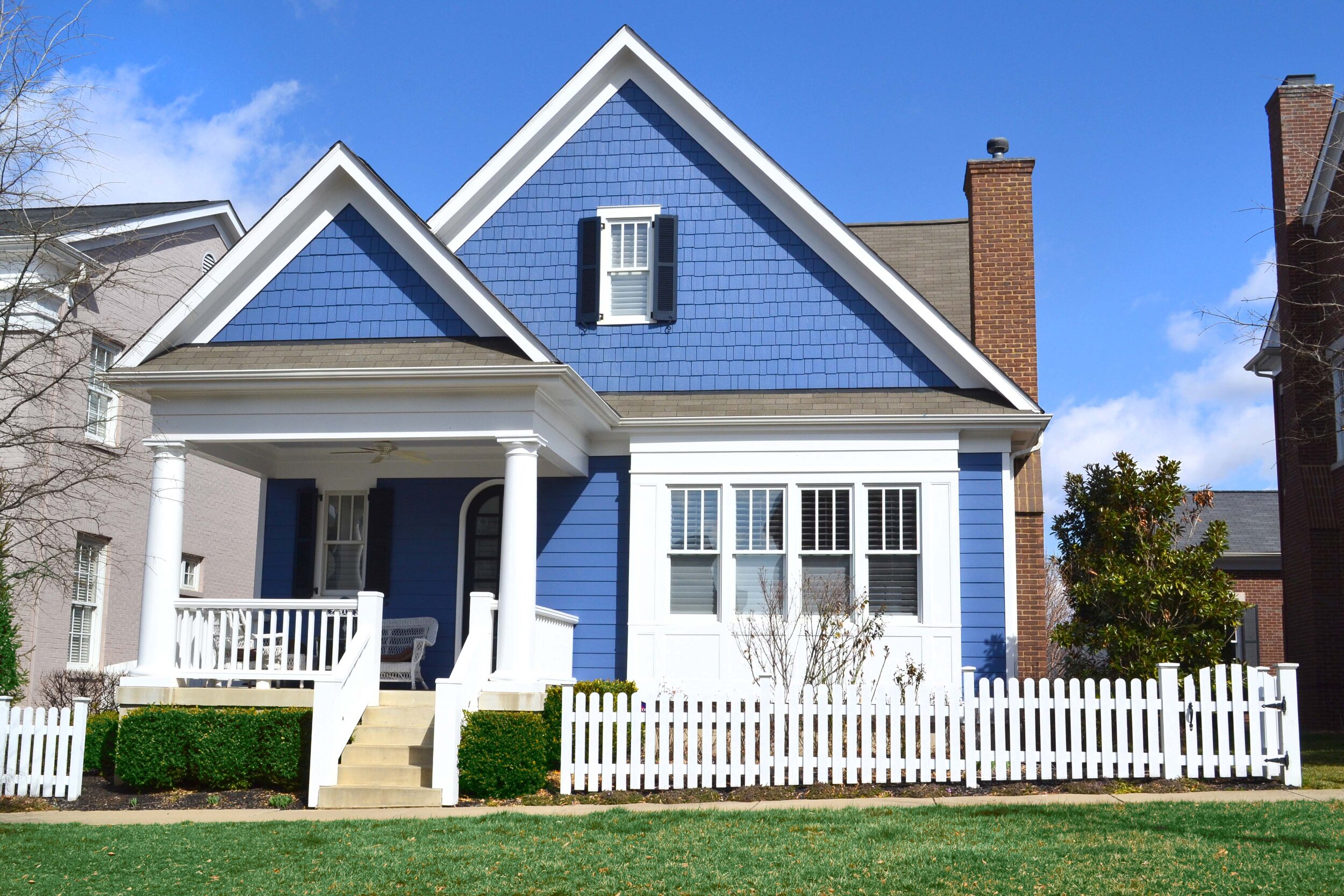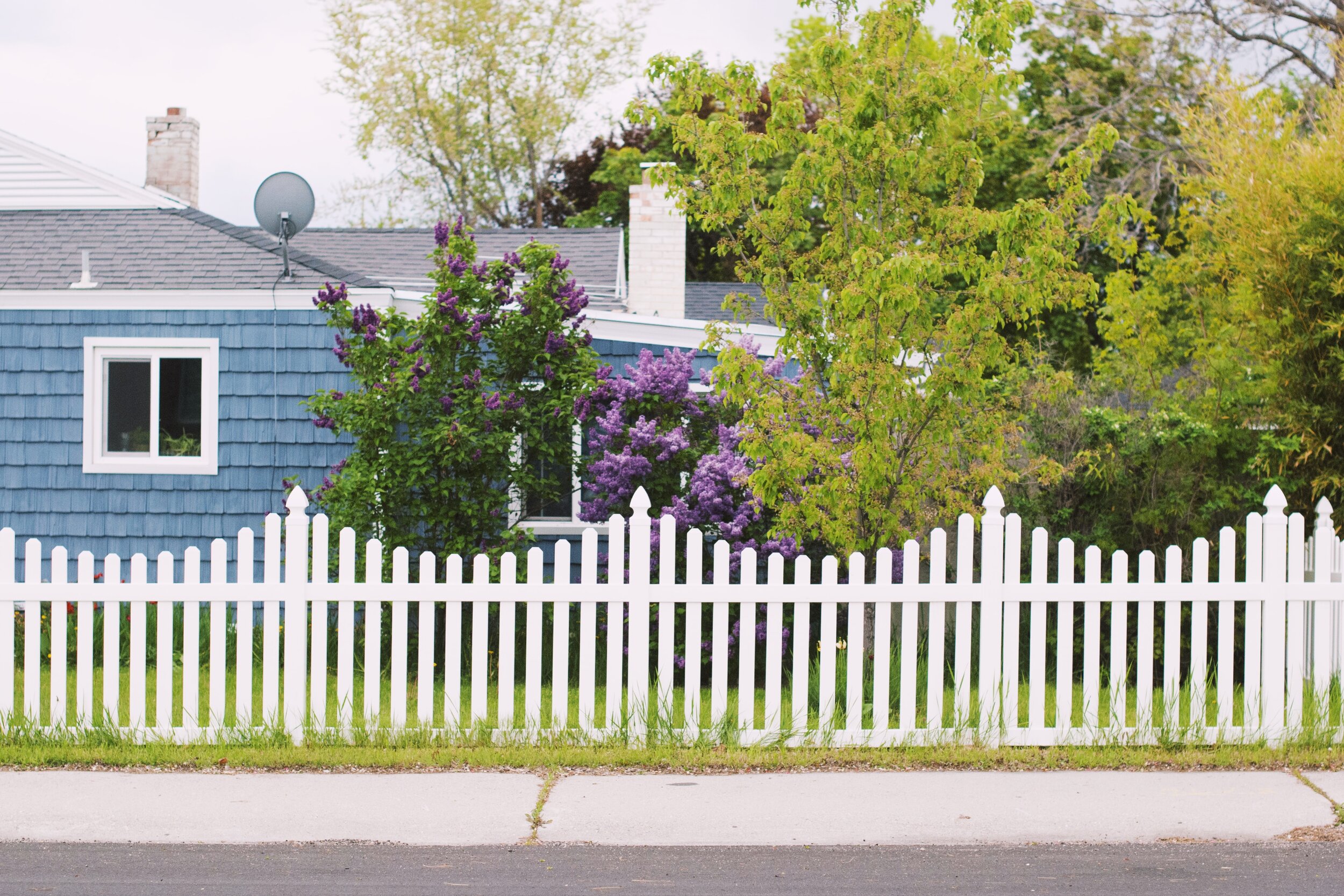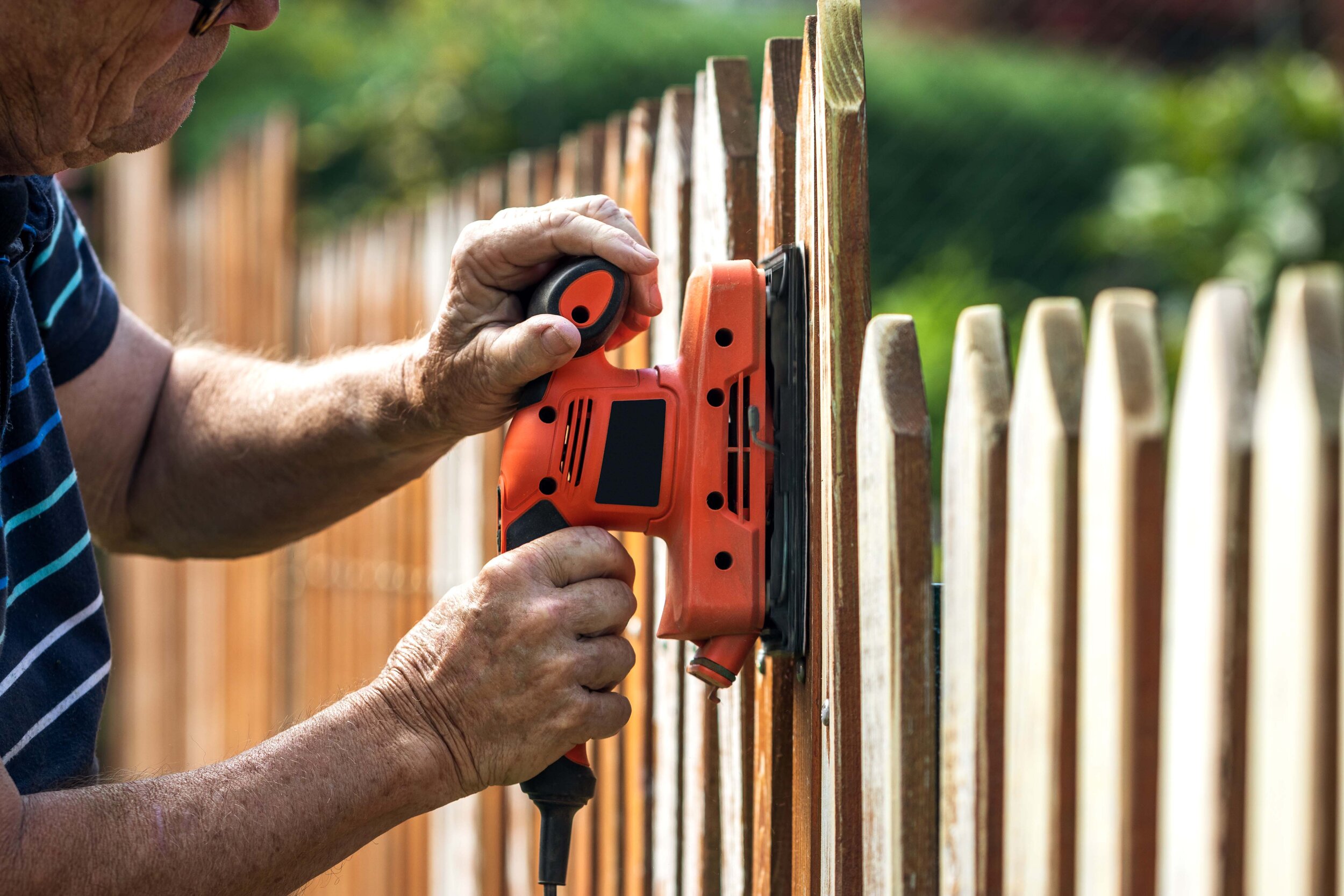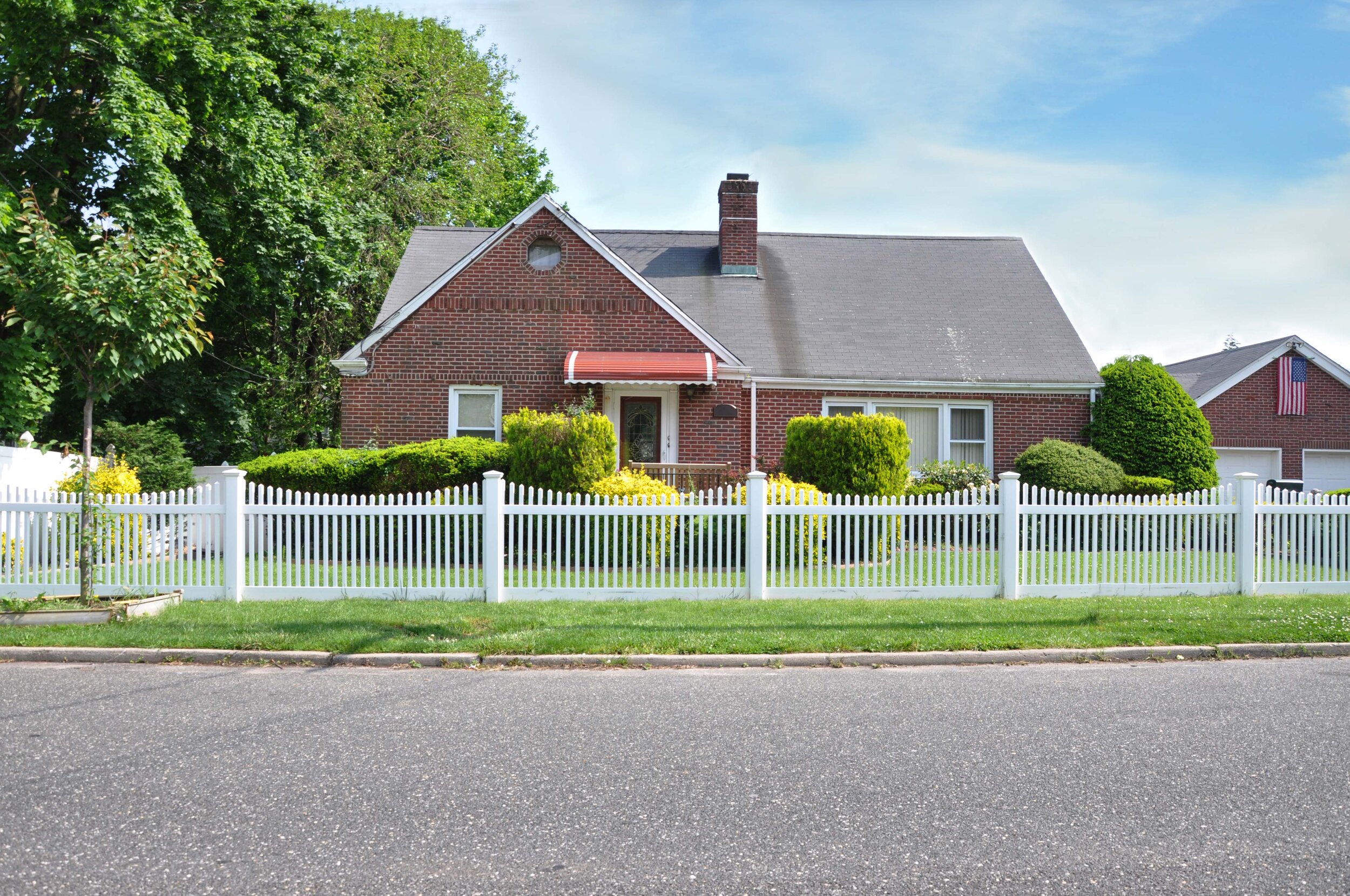The Picket Fence: Expectations vs Reality
/PICKET FENCE
DISCLAIMER: AS AN AMAZON ASSOCIATE I EARN FROM QUALIFYING PURCHASES. THERE ARE AFFILIATE LINKS IN THIS POST. THIS MEANS THAT AT NO COST TO YOU, I WILL RECEIVE A COMMISSION IF YOU PURCHASE THROUGH MY LINK. I WILL ONLY EVER PROMOTE THE PRODUCTS AND SERVICES THAT I TRUST AND 100% RECOMMEND. YOU MAY READ MY FULL DISCLOSURE POLICY FOR MORE INFORMATION. THANK YOU FOR SUPPORTING MY BUSINESS IN THIS WAY.
The picket fence has remained fashionable for more than 200 years. It’s seen its way through several changing design eras, from Neoclassical architecture to the days of Colonial Revival style.
Today, picket fences are best known for being a symbol of the American dream. While not quite as popular as they were in their heyday, picket fences continue to adorn many suburban homes.
Read on to learn everything you need to know about this classic design staple.
History of the Picket Fence
Du Bois, W. E. B. , Collector. Exterior View of House With Picket Fence, Man and Dog. Georgia, 1899. [or 1900] Photograph. Library of Congress.
The term “picket” comes from the French word piquet. Pickets were originally used as a tool of war by Europeans. They were made from logs of wood, and had sharp points that could be used to protect against an onslaught of attackers.
When colonists arrived on American shores, they set up fences made out of these sharpened logs to protect and mark their territory. Some started whitewashing the logs to make them more decorative. Eventually, by the 1800s, picket fences became a full-blown trend across the entire US.
The fences popped up first in Boston and Philadelphia, a recognizable feature of the neoclassical design of the era. They were seen as a symbol of sophistication and prosperity, particularly for the middle class.
Simple and unpretentious, the fences were affordable and highly functional. They were used to keep children and pets safe from passing automobiles, protect gardens, and keep animals like chickens from running all around the neighborhood.
In the late 19th century, white picket fences were briefly replaced by a fenceless-yard trend and again in the 1950s by chain-link fences. The picket fence became fashionable again in the late 1900s.
Today, they’re often seen in suburban homes, either white-washed or with a natural look. Just as functional as ever, the fences can be used to surround a pool, enclose a garden, or keep pets and kids from running around the neighbor’s property. It’s a throwback to the earliest days of American history — and for many, a quaint reminder of old-fashioned neighborhoods.
Different Types of Picket Fences
While the picket fence is often seen as a conservative choice, it actually comes in a number of architectural styles. You can choose between a range of picket styles, post styles, and post top styles to match your design aesthetic.
Some of the most popular decorative picket styles include the Windsor, Osbourne, Spear, Torrens, and Malvern picket. The Blank and Round pickets have a minimal design, while the Pointed and Spear pickets are more traditional looks. Most of the early picket fences were spear-shaped to prevent water from gathering on top.
You can also customize your fence further by choosing your material, paint color, and stain option.
Which Wood Should I Choose for My Picket Fence?
If you want to stick with the traditional white-washed wood fence, Barrier Fence of Austin, Texas recommends using softwoods that you can easily paint. Consider going with spruce, fir, or pine. Avoid woods that don’t absorb paint easily, such as redwood or cedar.
If you like the natural look of wood, you may prefer to forgo the paint. In this case, look for a wood that is good for outdoor use — redwood, cedar, or cypress are all good choices. Make sure the wood is stained and treated so it will resist rot and decay.
You can also go with a wood alternative like vinyl, wrought iron, composite wood, or PVC. These options are often lower-maintenance than wood. They work well for rental properties, in places with extreme weather conditions, or for homeowners who want to set it and forget it.
How Much Does a Picket Fence Cost?
According to HomeAdvisor, a picket fence typically costs between $10-$75 per linear foot. This includes the cost of materials and installation.
The final cost of your project will depend on a few things: what material you used, the size of the fence, and whether you DIY it or hire a contractor. Gates can also increase the cost of fence installation.
To cut back on your costs, use a cheaper material such as pine, cedar, or cypress. You can also consider ordering prefabricated panels or a ready-to-assemble box kit, and install the fence yourself.
If you have a hilly property, this will make it more difficult to install, so it’s best to hire a professional. Be aware that having a sloping property may also raise the cost of installation.
Additional Factors to Consider
When you are deciding what style of picket fence to choose, a good rule of thumb is to look at your roof. Do you have a steep, sloping roof? Consider going with pickets that are tall and sleek. Do you have a one-story cottage with a flat roof? A shorter picket fence will complement this style nicely.
When you’re determining the height of your fence, keep in mind that most residential fences are around 3-4 feet tall. If your fence surrounds a pool, there may be specific guidelines on how tall the fence needs to be. Some areas stipulate that the fence must be between 6-8 feet tall if it encloses a swimming pool.
Check with your local government or building office to learn the requirements in your area. You should also check with your neighborhood association to see if there are any neighborhood-specific rules.
Conclusion
A quintessentially American feature, picket fences have adorned yards for years — and for a good reason. Picket fences have a simple, straightforward design that makes it easy to see through on either side. They divide your piece of land from the neighbors’ on either side and perhaps a common area in the back, yet they do not create an insurmountable barrier.
This inviting nature is one of the historic draws to the picket fence. It’s a great choice for gardens, front yards, and back yards alike. Whether you paint the fence the classic white, leave it natural, or paint it to match the color of your home, the picket fence will make an iconic statement.
Brandon Hubbard, AIA, NCARB, LEED AP BD+C

![Du Bois, W. E. B. , Collector. Exterior View of House With Picket Fence, Man and Dog. Georgia, 1899. [or 1900] Photograph. Library of Congress.](https://images.squarespace-cdn.com/content/v1/556b5950e4b07e55e369809c/1624897615443-WSWO77ON2FJS102CVDK2/1899+PICKET+FENCE.jpeg)






